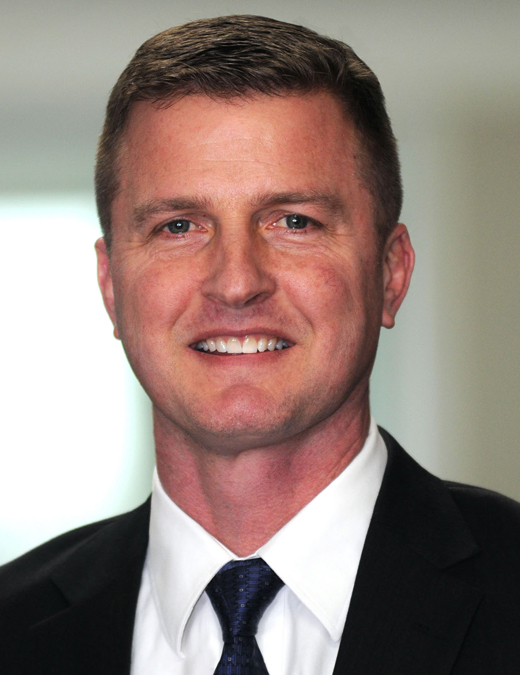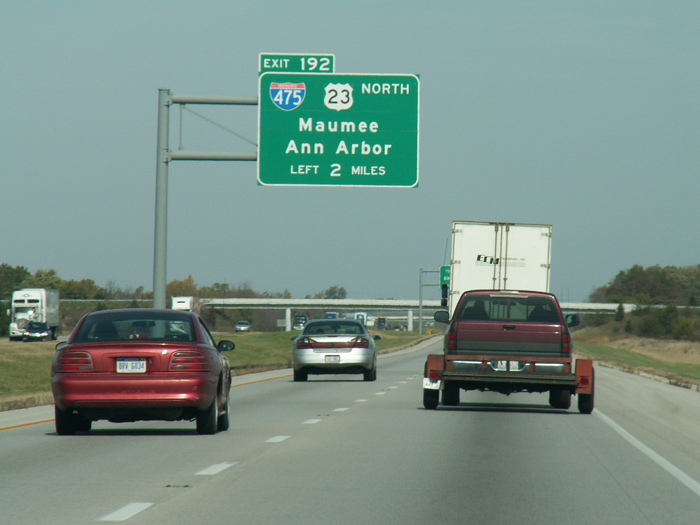
As published in the February 1, 2015 Toledo Business Journal

Todd Audet
Ohio Department of Transportation
$1B for NW Ohio highway construction
Toledo Business Journal is providing readers with an insight into the impact local construction projects will have on several major transportation corridors passing through our region. Todd Audet, district deputy director for Ohio Department of Transportation District 2, which serves the counties of Williams, Fulton, Henry, Lucas, Wood, Ottawa, Sandusky, and Seneca, shares information about Interstate construction projects, and how his department works to make travel safer and more efficient.
Toledo Business Journal: There will be an estimated $1 billion of highway projects under construction in northwest Ohio by spring of 2015. Can you discuss the major projects that are involved?
Todd Audet: The Ohio Department of Transportation will have 10 major interstate projects under way during the 2015 construction season. New work will include construction of a new interchange at Central Avenue and two projects that will widen Interstate 75 from the I-75/475 split in Toledo to the I-280 interchange. We will reconstruct pavement on I-75 in downtown Toledo from the I-75/I-475 split in Toledo to the Anthony Wayne Trail. We will continue to widen Interstate 75 to three lanes in each direction between Perrysburg and Findlay. In western Lucas County, work on I-475 will extend from the US 23 interchange to Salisbury-Dussel Drive, featuring the widening of four bridges and a safety project that will improve the I-475/US 23 interchange. Finally, the Anthony Wayne Bridge project continues on schedule and is expected to finish in September of this year.
TBJ: Can you discuss this high level of project activity and efforts that your department has undertaken to manage this additional amount of work?
TA: The ODOT District Two team has stepped up to the plate. It all started with an outstanding effort by our planning and engineering department to get us to this point. Now, in the construction phase, it is a daily effort between our construction and highway maintenance forces. Our engineers and highway workers are continuously working together to make the coordination and execution seamless. Regular outreach with public safety officials and the media has been critical in our efforts to prevent incidents and recover quickly when they occur. Our main focus is to keep traffic moving safely. We use feedback from our internal and external customers to rapidly adapt and improve our processes. There are challenges, but the knowledge and creativity of our workforce keep these crucial highway corridors operating efficiently.
TBJ: What impact do you see from these projects in terms of economic development for the region?
TA: Northwest Ohio is positioned at the crossroads of two of our country’s largest freight corridors: Interstates 75 and 80. The widening of I-75 from Findlay to Perrysburg represents a nearly $500 million investment by the State to ease congestion and enhance the movement of people, goods, and services. We also have unique local transportation assets creating opportunities in multimodal logistics, such as the CSX Intermodal Facility in North Baltimore, Norfolk Southern Airline Junction in Toledo, the Port of Toledo, and Toledo Express Airport. Reconstructing the roads and improving intermodal connectivity provides an essential platform for economic development.
TBJ: Can you discuss the I-75 construction project and efforts being taken to minimize disruption and avoid congestion during construction?
TA: Throughout the planning and construction phases, we have remained committed to keeping two lanes open in both directions during peak travel times. When incidents occur, we work closely with the contractor and public safety personnel to get the road open to traffic in the shortest time possible. We meet regularly with law enforcement and public safety to review incidents and refine our response procedures as needed. Communication through all of our media outlets on changes in the project is a priority. We also have implemented the Towing and Recovery Incentive Program (TRIP), which involves monetary bonuses for towing and recovery services that quickly relocate large commercial vehicles out of traffic.
TBJ: Can you discuss key issues with the interchange projects in the area and also the I-75 overpass near Phillips Avenue?
TA: All of the interchange projects are designed to make the roads safer and more efficient, but we’ll have to get through some challenges during construction. Early this spring, ODOT will begin Phase Two of the Interstate 75/475 Interchange project, completing the upgrades to I-475 and widening I-75. Our main issue during this time will be the complex traffic control impacting this area. We plan on addressing this head-on through public outreach and working closely with the City of Toledo and the Toledo Police Department.

I-75 will be widened between Perrysburg and Findlay
TBJ: What is the expected timing for completion of each of the major projects in the area?
TA: Most of our major projects that began in 2014 or will begin in 2015 will take two to three years to complete. The good news is that this September, we will reopen the Anthony Wayne Bridge. We also expect the I-475/US 23 interchange project to be complete this fall.
TBJ: Will the decline in oil prices have an impact on the budgets for these projects and what has happened to highway asphalt prices in the past several months?
TA: One would think that lower oil prices over the near and long-term would have a positive impact. We’ll just have to see how the market responds. ODOT is scheduled to establish new asphalt contracts this spring, and we will start to see those estimates in February. Historically, the variances in the price of oil have had a significant impact on the price of asphalt and asphalt liquids. We don’t expect any change in cost to greatly impact our major construction projects, but lower prices may allow us to do more with asphalt in our general highway maintenance program.
TBJ: Can you discuss your background and experience prior to your position at the Ohio Department of Transportation and how it has prepared you for this high amount of project activity?
TA: As far as the amount of work, there is no way that one person could manage this amount of activity. For that reason, I am deeply grateful for the hard working planners, construction personnel, maintenance personnel, and our local partners in District 2.
My diverse career as an engineer at ODOT, as a military engineer for twenty-plus years, and as vice president of operations at Midwest Terminals in Toledo conditioned me well to operate in resource-constrained environments and to partner with diverse groups of people to identify and execute effective strategies.
TBJ: Are there any other issues that you would like to address?
TA: One of the biggest issues we continue to see is speeding in the work zones. Our number one priority is the safety of all drivers and the men and women who work on our roads. While you are driving, just be patient and allow yourself extra time. Don’t be that person that ruins everyone else’s commute — or worse — because you were distracted or driving too fast.